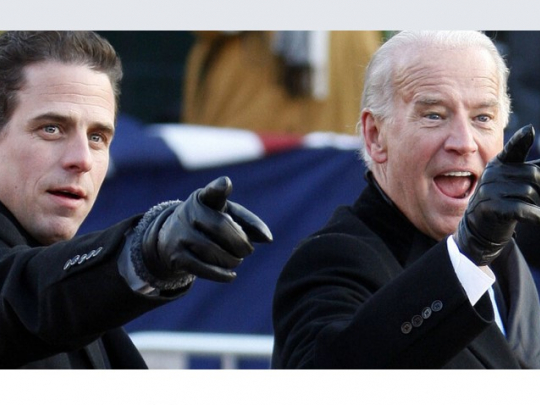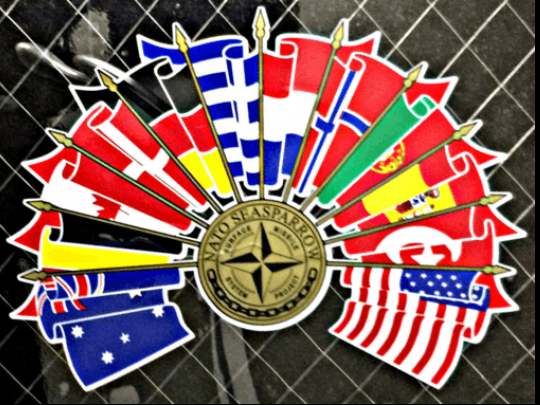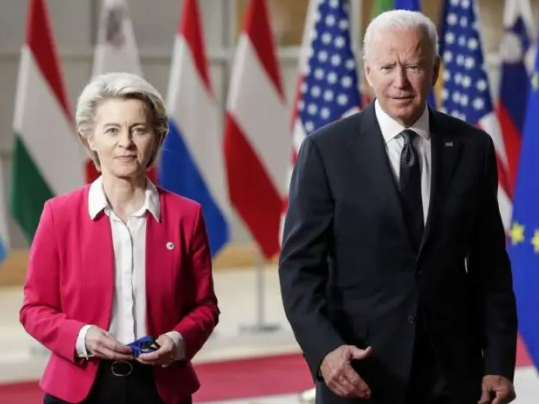Slaughter in Indonesia: Britain’s secret propaganda war

 In early 1965 Ed Wynne, an official from the Foreign Office in London in his late 40s, arrived at the door of a two-storey villa set in the discreet calm of a genteel housing estate in colonial Singapore.
In early 1965 Ed Wynne, an official from the Foreign Office in London in his late 40s, arrived at the door of a two-storey villa set in the discreet calm of a genteel housing estate in colonial Singapore.
But Wynne was no ordinary official. A specialist from the Foreign Office’s cold war propaganda arm, the Information Research Department (IRD), he had been assigned to lead a small team. A junior official, four local people and two “IRD ladies”, seconded to the unit from London, would join him.
The arrival of Wynne and his colleagues in the Winchester Road cul-de-sac marked the beginning of what would later be claimed, by those who led it, as one of the most successful propaganda operations in postwar British history. A top secret operation that helped overthrow the leader of the fourth most populous country in the world and contributed to the mass murder of more than half a million of its citizens.
The proof of Britain’s role in inciting what the CIA later described as “one of the worst mass murders of the 20th century” lies in another leafy suburb. In declassified Foreign Office documents – held far beyond the 20-year rule – in Kew in London.
Recently released in Britain’s National Archives are pamphlets purporting to be written by Indonesian patriots, but in fact written by British propagandists, calling on Indonesians to eliminate the PKI, then the biggest communist party in the non-communist world.

Sukarno, Indonesia’s first president. Photograph: Universal Images Group/Getty Images
The outcome of the turmoil was a brutal and corrupt 32-year military dictatorship whose legacy shapes Indonesia to this day.
Two years earlier, in response to British plans to create an independent state of Malaysia out of its colonial possessions, Indonesia’s left-leaning President Sukarno launched “Konfrontasi”, or Confrontation, an undeclared war that included military incursions over the border into East Malaysia. Sukarno, like many Indonesians, including the PKI, believed the creation of a Malaysian federation was unwarranted regional interference by the British to maintain their colonial dominance.
The British were forced to dedicate huge military and intelligence resources to help the emergent Malaysia counter these Konfrontasi intrusions.
British policy was to bring an end to the conflict. But the UK’s objectives did not end there.
Like its US and Australian allies, Britain feared a communist Indonesia. The PKI had three million members and was close to Mao’s China. In Washington the fall of the Indonesia “domino” into the communist camp was seen as a greater threat than the potential loss of Vietnam.
Increasingly Sukarno’s non-aligned nationalism, anti-colonialism and growing ties to China were viewed as a threat, one that would be lessened if the president and his foreign minister Subandrio were removed from their posts and the PKI’s influence in Indonesia diminished – most plausibly through the actions of the largely anti-communist Indonesian army.
In mid-1965 the opportunity arrived. A secret leftwing group, later called the “30 September movement”, coalesced in Indonesia, convinced, with some justification, that the army was planning to overthrow Sukarno and suppress the PKI.
On the night of 30 September leftist officers associated with the movement, under the command of Lt-Col Untung of the presidential guard, supported by a handful of battalions, attempted a pre-emptive strike against the army’s high command.
They tried to seize seven of the Indonesian army’s most senior generals. Three, including the commander of the army, were killed. Another three were murdered at the Indonesian air force base where they had been taken. The bodies of the murdered generals were tossed into a well.
The defence minister, Gen Nasution, escaped. His six-year-old daughter and his aide were murdered.
But by the evening of 1 October the commander of the army’s main combat unit, Gen Suharto, had taken command of the army and was mounting a counterattack that within three days completely neutralised the poorly organised rebellion.
While it is now believed that the PKI’s chairman and his agents were involved in the attempted coup, there is no credible evidence that Sukarno knew about it beforehand, or that the PKI as an organisation or its mass membership were responsible for it.

Gen Suharto, left, at the funeral in Jakarta of the six army generals killed in the attempted coup. Photograph: AP Advertisement
But the bloodshed did not end there. Suharto, appointed supreme army commander on 14 October, used the rebellion to undermine and eventually overthrow Sukarno, and as what historian John Roosa has called a “pretext for mass murder”: the elimination of the PKI in a series of massacres across Indonesia that resulted in the deaths of hundreds of thousands of people.
The Foreign Office had always denied Britain was involved in the violence that was then unleashed on alleged communists. But these revelations show British intelligence agencies and propaganda specialists were complicit, carrying out covert operations to undermine Sukarno’s regime and eliminate the PKI by blaming them for the Untung coup.
Britain’s propaganda “stiletto” was wielded by Ed Wynne, the specialist sent to Singapore by the Foreign Office’s IRD. IRD had been set up by the 1945 Labour government to counter Soviet propaganda attacks on Britain and produce anti-communist material of its own. It was closely linked to MI6 and its activities mirrored the CIA’s cold war propaganda operations.
The blandly named South East Asia Monitoring Unit, or Seamu, was set up at the suggestion of the British ambassador to Indonesia, Sir Andrew Gilchrist, whose embassy in Jakarta had been burned down by PKI protesters in 1963.
Although limited tactical “psywar measures” against Indonesian troops were in place, by 1964 ideas were being “canvassed” to undermine “the Sukarno/Subandrio regime” and so end confrontation – Subandrio was Sukarno’s foreign minister. What Gilchrist wanted and what became the unit’s mission was the production of black propaganda, apparently produced by patriotic Indonesian émigrés abroad, to stir Indonesian anti-communists into action.
The influential targets of a propaganda newsletter, according to a declassified report by Wynne, would eventually include “as many personages in the hierarchy of government, army and civil service as we can find”.
To disguise the British origin of the newsletter it was sent into Indonesia via Asian cities including Hong Kong, Tokyo and Manila.
Within a year 28,000 copies of the newsletter, written in Indonesian and called Kenjataan2 (Facts 2), had been sent and were, according to Wynne, reaching the minister of defence, “other generals, newspapers on the right side and even President Sukarno himself”.
By the end of September 1965 Wynne’s operation was “in full swing” and ready to take full advantage of the failed Untung coup.
It was the moment the British had been waiting for. As one Foreign Office official commented: “A premature PKI coup may be the most helpful solution for the west – provided the coup failed.”
The unit sprang into action with radio broadcasts and the production of a special issue of the newsletter, now finally disclosed at Kew more than 66 years after the events it was designed to influence.
It starts with a nod towards moderation, but it is a virulent call to arms designed to inflame and encourage the destruction of the PKI.

Carrying bamboo spears and hatchets, a group of Indonesian nationalists accompany an Indonesian army patrol in the search for communist sympathisers. Photograph: Bettmann Archive
“No, we do not cry out for violence,” the IRD propagandists wrote, “but we demand in the name of all patriotic people that this communist cancer be cut out of the body of the state.” The PKI “is now a wounded snake”, they wrote: “Now is the time to kill it before it has a chance to recover.”
And IRD’s incendiary newsletter was sent at the key moment as the success of Suharto’s bid for power and the army’s operations against the PKI hung in the balance.
Detailed historical research has established that the mass killings of PKI party members and alleged supporters appear to have been triggered by local army commanders or the arrival of army special forces, about three weeks after the botched coup had been put down by Suharto.
During that period the media in Indonesia was full of black propaganda against the PKI and its alleged atrocities, as the army whipped up popular anger against communists and legitimised what Roosa has described as its “already-planned moves against the PKI and President Sukarno”.
"Anyone who was leftist was picked up. They were very systematic", Tari Lang said.
The “special issue” and other inflammatory newsletters in the series were sent to about 1,500 recipients. A Seamu report notes intelligence that readers “were influenced in the required direction”.
The newsletters were approved by IRD in London before dispatch. Copies sent to senior Foreign Office officials were destroyed after reading at IRD’s request.
Tari Lang was living in Indonesia at the time with her father and mother, the late human rights campaigner, Carmel Budiardjo, then working as a translator and economic analyst.
“Anyone who was leftist was picked up. They were very systematic. They targeted all the leftist groups and not just PKI. People kept themselves to themselves and only talked in whispers.”
Tari’s parents were imprisoned, her mother freed three years later with the help of the Foreign Office.

Human rights campaigner Carmel Budiardjo with her children, Anto and Tari, and husband Suwando. Both parents were imprisoned
As the massacres progressed in the autumn of 1965, IRD’s unit in Singapore reassured their readers as to the necessity of the slaughter.
In Newsletter 21 they wrote: “Unless we maintain a vigorous campaign to eradicate communism … the red menace will envelop us again.”
The stakes were life and death. “We are fighting for our lives and the very existence of Indonesia and we must never forget that. THE CATS ARE WAITING TO POUNCE!”
In Newsletter 23 Winchester Road’s propagandists praised “the fighting services and the police” for “doing an excellent job”. Sukarno, then trying to restrain the generals, was wrong: “Communism must be abolished in all its forms. The work started by the army must be carried on and intensified.” The authors finished by equating the PKI to Hitler and Genghis Khan.
The attempted coup and its aftermath coincided with the arrival in Singapore of one of the Foreign Office’s leading propagandists. Gilchrist thought that Britain’s expanding propaganda effort was not enough. He asked for Norman Reddaway to be sent as “coordinator of political warfare” against Indonesia with the support of the chief of the defence staff, Lord Louis Mountbatten.
Reddaway had served in the army during the second world war before joining the Foreign Office and playing a key role in the establishment of IRD. After the failed Untung coup he arrived to take charge of the British operation. His brief was simple. In an interview in 1996 with two of the authors, he said he’d been given a budget of £100,000 by the Foreign Office and was told “to do anything I could do to get rid of Sukarno”. Only now do we know what “anything” fully meant.
"The news machine was our bludgeon: the newsletter and our unorthodox operations our stiletto", Norman Reddaway said.
A secret assessment of IRD operations by Reddaway, written to the head of IRD in July 1966, after Sukarno was effectively removed from power, is in the National Archives. Reddaway claimed that his unattributable briefings to the press were effective in moving global opinion and the propaganda operation was a great success.
“The news machine was our bludgeon: the newsletter and our unorthodox operations our stiletto,” he said.
In another released document he reported that IRD and the generals were “singing in harmony”.
Former Foreign Office official Derek Tonkin, who was the London desk officer for Indonesia from 1963 to 1966, said last month he had not seen the propaganda newsletters as he was too junior, but that in those early days after the 30 September attempted coup, no one could possibly have foreseen what a bloodbath would ensue.
But, he admits, “it might not be easy to escape the charge that Britain initially helped in some small measure to instigate the demise of the PKI in what was to be a very ghastly manner”.
As for Reddaway, according to Tonkin, “he was a bit of a loose cannon and like many propagandists was perhaps overcommitted to his mandate”. Reddaway and his team were “rather a law unto themselves, but the FO knew that he would be when they appointed him”.

Norman Reddaway joined the Foreign Office after the war
In the 1996 interviews Reddaway boasted of manipulating the British and other global media to take an anti- Sukarno and PKI line but insisted IRD only passed on true facts and did not use black propaganda.
As ever with IRD, Reddaway told us a partial truth. According to a memo he had written: “The bludgeon was surprisingly effective because we were able … to supply publicists with information which they could not find from other sources because of Sukarno’s censorship.”
Reddaway identified the most useful recipients of his output as the news agencies, “less choosy about their fare and they are more anonymous”, and radio men: the BBC’s World Service and Indonesian Service in particular. One of Reddaway’s main sources was, naturally, the British ambassador in Jakarta, Gilchrist, with whom he exchanged a weekly update throughout the period.
In July 1966, in one letter to Gilchrist, Reddaway celebrated that it was “the first time in history that an ambassador had been able to address the people of his country of work almost at will and virtually instantaneously”.
To feed the operation Reddaway was also drawing upon signals intelligence, or Sigint.
He was in an excellent position to do so. Singapore was the location of a GCHQ monitoring site.
According to Dr Duncan Campbell, the investigative journalist and expert on GCHQ, the organisation’s Singapore monitoring site, RAF Chia Keng, was hidden behind and within a larger RAF communications station on Yio Chu Kang Road in eastern Singapore, now a housing estate. GCHQ’s high security listening “bungalows” had opaque glass brick windows that hid about 50 civilian staff on each shift. The base was perfectly located quickly to get full and direct reports about developments in Indonesia. According to Campbell, “GCHQ could break and read Indonesian codes without difficulty. The government was among many third world countries using equipment supplied by Swiss-based company Crypto AG. For over 50 years, Crypto AG supplied secretly sabotaged cypher machines, with built-in back doors to which the CIA and GCHQ had keys.”
A revealing memorandum, dated 30 October 1965, from Reddaway to Brian Tovey, later director of GCHQ, then on posting to Singapore, highlighted the contribution which Sigint could make. Reddaway told his colleague the GCHQ material can “help the generals to persecute the PKI more effectively”.
The newsletters remained the core work of Ed Wynne and his colleagues in Winchester Road. A key theme was to encourage their influential readers to support the army’s campaign against the communists. They urged Indonesian patriots: “The PKI and all it stands for must be eliminated for all time.”
We now know that to do that they included sensationalised lies. On 5 November the pro-military Jakarta Daily Mail claimed that on the day of the Untung coup 100 women from PKI’s Gerwani women’s organisation had tortured one of the generals using razor blades and knives to slash his genitals before he was shot.
The story of the torture and mutilation of the generals by the Gerwani women became part of the founding myth of Suharto’s regime, used to justify the destruction of the PKI. It was also, according to Roosa, a pretext for murder. A lie propagated by the Indonesian army, regurgitated and repurposed to incite IRD’s influential readers.
The army’s propaganda story was recycled back into Indonesia in January 1966 in Newsletter 23 with a report on allegations made by two PKI members interrogated by the army. One linked Sukarno’s foreign minister Subandrio to the construction of a “torture room” for the use of PKI prisoners, the other, referencing the Jakarta Daily Mail, a member of the PKI’s women’s organisation, the Gerwani, “one of those ‘honoured’ with the task of mutilating the generals”.

Armed police in Jakarta stand guard over members of a communist youth group arrested in connection with the abortive coup against President Sukarno, October 1965. Photograph: Bettmann/Bettmann Archive
The 15-year-old girl was reported to have said, “Our platoon leader ordered us to beat the prisoner and then cut his private parts with the small knives.”
Tari Lang, Carmel Budiardjo’s daughter, was also 15 at the time.
“These newsletters are horrendous. If you hadn’t told me who had written them I would have thought it was Indonesians. It is quite unbelievable that they did this.
“There were Gerwani women in my mother’s social circle and they were like members of the Women’s Institute. Very gentle.”
The IRD was deliberately silent on the massacres. One document from December 1965 says they should “do nothing to embarrass the generals” and the newsletter carefully itemises accounts of isolated incidents of PKI brutality but makes no explicit mention of the army’s killings.
In fact the policy went further. In Seamu’s report for 1965 Wynne wrote that they’d used the newsletter for “continued attacks on the guilty men … and indirect support for the clean up and control by the generals”. The generals, Wynne noted, “we treat gently”.
By early 1966 the mass murders in Indonesia, if not their scale, were well known.
In January Robert F Kennedy compared the massacres to “inhuman slaughters perpetrated by the Nazis and the communists” and asked when people would “speak out … against the inhuman slaughter in Indonesia, where over 100,000 alleged communists have not been perpetrators, but victims?”
By February, dismissing the idea of “advertising the blood-bath” as reducing the chances of “getting a new management in Indonesia”, Reddaway observed, “I am delighted that a good number of communists have been disposed of, but their killers are predominantly military and Muslim.”
By March 1966 the murderous campaign against the PKI that resulted in more than half a million deaths was largely over. On 11 March, President Sukarno was forced to hand over power to Gen Suharto, and the end of Confrontation was in sight.
On 14 March, Reddaway wrote to Gilchrist: “I cannot see how in the short term things could have gone any better during the last 10 days.
“I know that the Indonesians under their new management are not going to be easy bedfellows, but I cannot avoid a little (unattributable) Te Deum over the change in the situation between 29 September and 12 March,” he wrote.
Wynne regarded the operation as a success. In his 1966 annual report he proudly says his operation was “fairly successful” because all his enemies (Konfrontasi, Sukarno, Subandrio and the PKI) were “destroyed”. His memory of these tragic events was one of “excitements”.
According to Prof Scott Lucas of the University of Birmingham, the declassified documents show that: “Britain was prepared to engage in dirty deeds which ran contrary to its purported values.” They reveal, he says, “how important black propaganda was to give the illusion that Britain could wield global power – even if many people might be killed for that illusion”.
-
Dr Paul Lashmar is an investigative journalist and reader in journalism at City, University of London.
-
Nicholas Gilby is a campaigns investigator and author of a history of bribery and Britain’s arms trade.
-
James Oliver is an Emmy-winning BBC producer and director and led the recent Pandora Papers investigation for BBC Panorama.


















